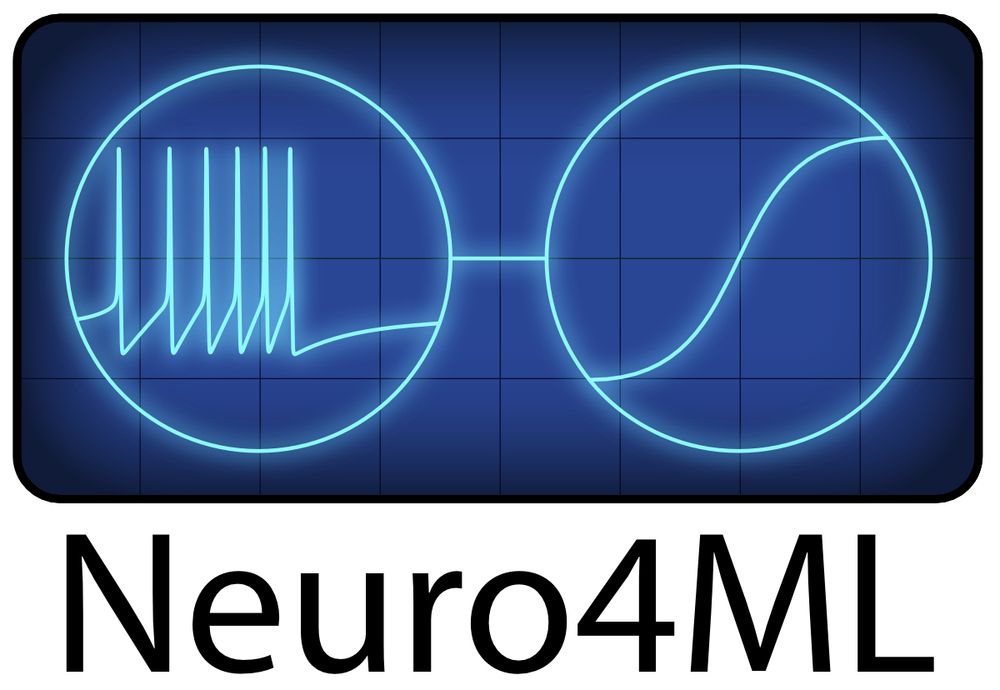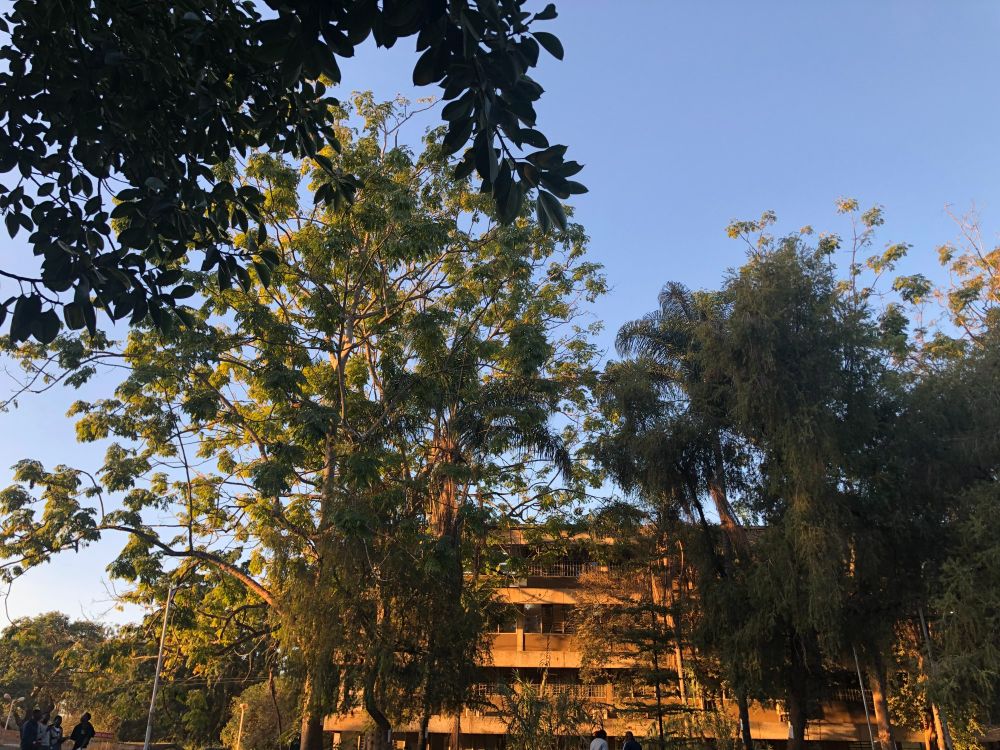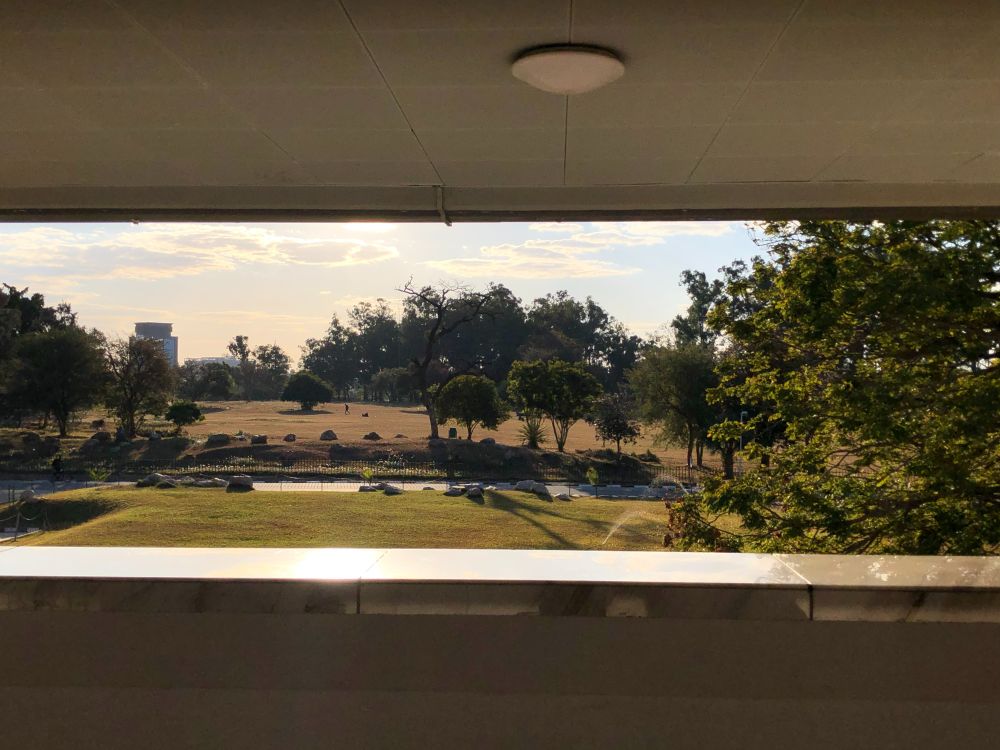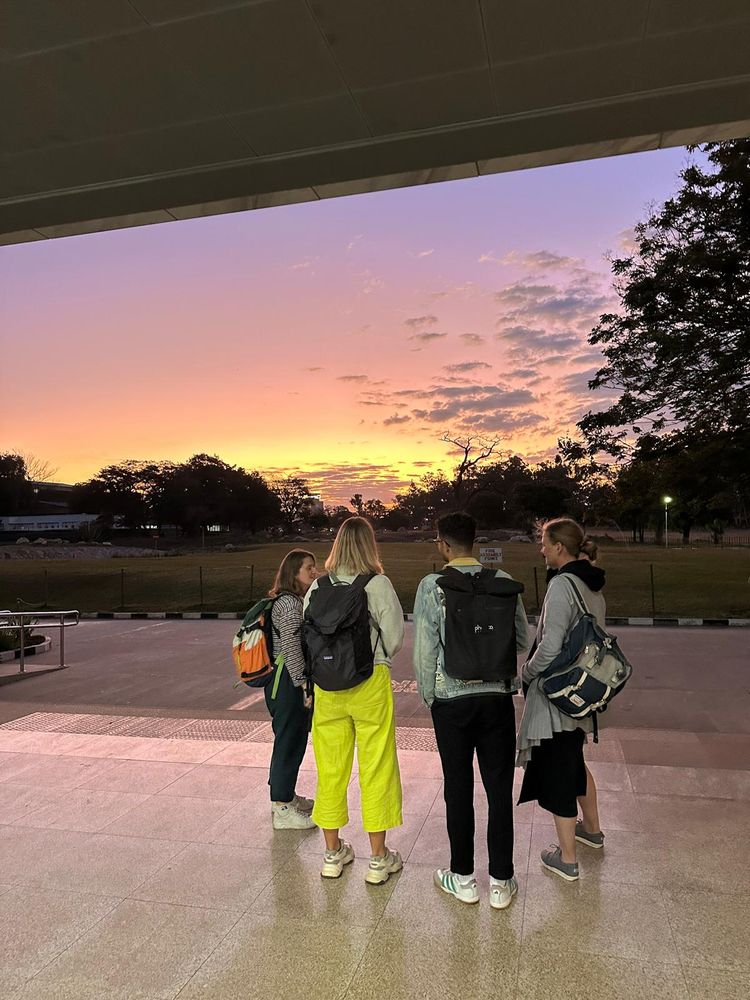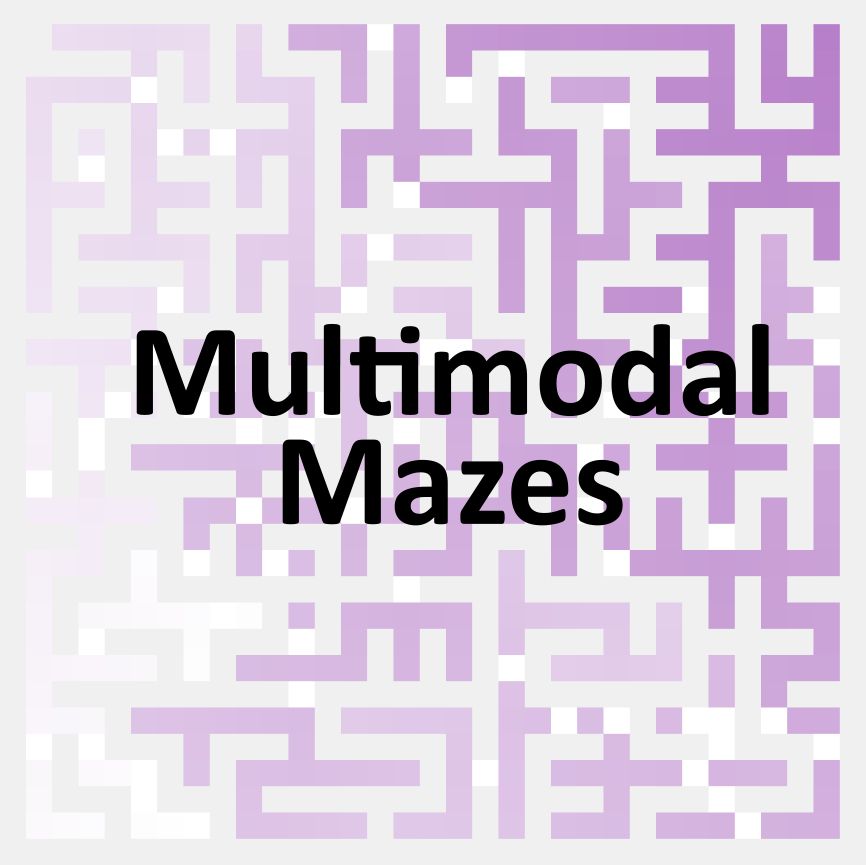
A diagram showing a maze with a gradient (of sensory cues) overlaid.
We’re excited about this work as it:
⭐ Explores a fundamental question: how does structure sculpt function in artificial and biological networks?
⭐ Provides new models (pRNNs), tasks (Multimodal mazes) and tools, in a pip-installable package:
github.com/ghoshm/Multi...
🧵9/9
01.08.2025 08:26 — 👍 7 🔁 0 💬 0 📌 0
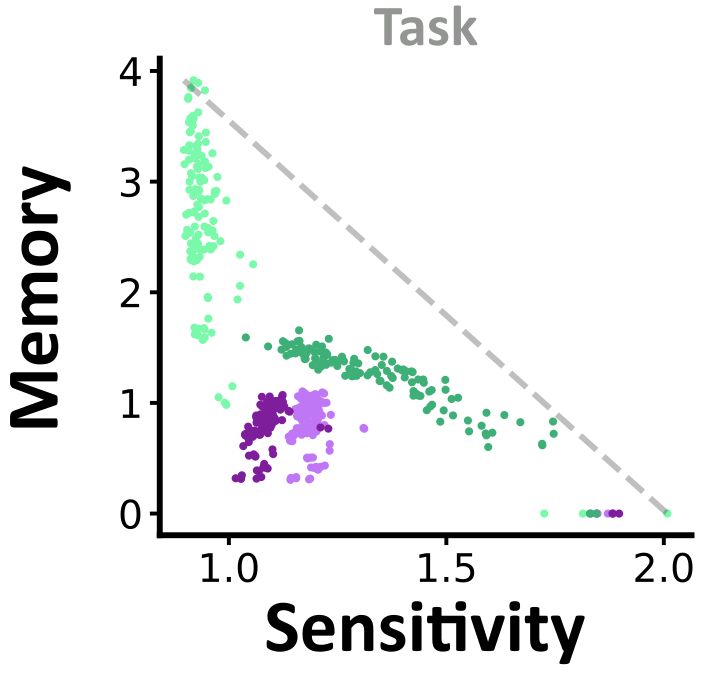
A diagram showing how different architectures (circles) learn distinct input-sensitivities and memory dynamics.
Third, to explore why different circuits function differently, we measured 3 traits from every network.
We find that different architectures learn distinct sensitivities and memory dynamics which shape their function.
E.g. we can predict a network’s robustness to noise from its memory.
🧵8/9
01.08.2025 08:26 — 👍 7 🔁 0 💬 1 📌 0
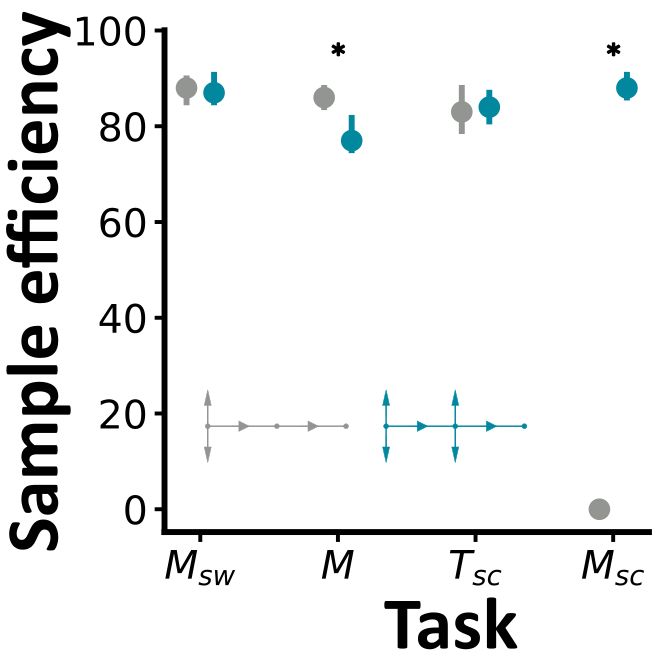
A diagram comparing the sample efficiency (learning speed) of two architectures (shown in grey and blue), across 4 maze tasks.
Second, to isolate how each pathway changes network function, we compare pairs of circuits which differ by one pathway.
Across pairs, we find that pathways have context dependent effects.
E.g. here hidden-hidden connections decrease learning speed in one task but accelerate it in another.
🧵7/9
01.08.2025 08:26 — 👍 7 🔁 0 💬 1 📌 0
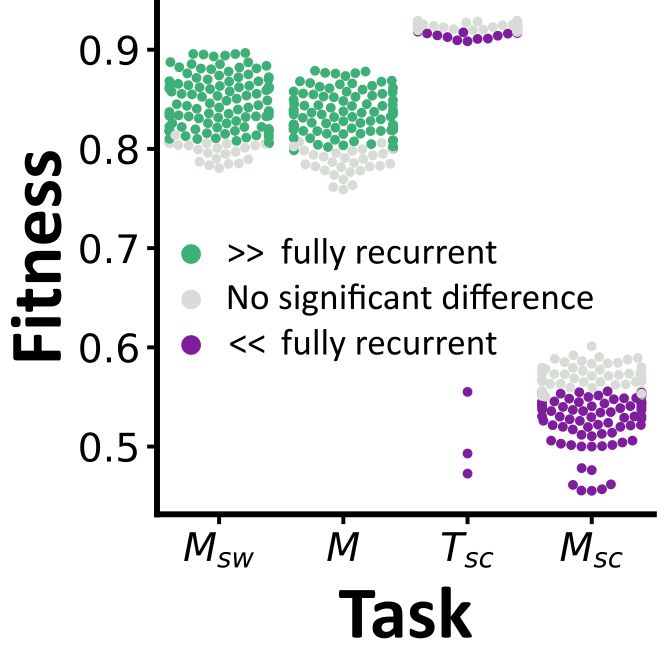
A diagram comparing the fitness (task performance) of all pRNN architectures to the fully recurrent architecture, across 4 types of maze environments.
First, across tasks and functional metrics, many pRNN architectures perform as well as the fully recurrent architecture.
Despite having less pathways and as few as ¼ the number of parameters.
This shows that pRNNs are efficient, yet performant.
🧵6/9
01.08.2025 08:26 — 👍 8 🔁 0 💬 1 📌 0
We trained over 25,000 pRNNs on these tasks.
And measured their:
📈 Fitness (task performance)
💹 Learning speed
📉 Robustness to various perturbations (e.g. increasing sensor noise)
From these data, we reach three main conclusions.
🧵5/9
01.08.2025 08:26 — 👍 6 🔁 0 💬 1 📌 0

A diagram showing 2D mazes with gradients of sensory cues.
To compare pRNN function, we introduce a set of multisensory navigation tasks we call *multimodal mazes*.
In these tasks, we simulate networks as agents with noisy sensors, which provide local clues about the shortest path through each maze.
We add complexity by removing cues or walls.
🧵4/9
01.08.2025 08:26 — 👍 8 🔁 0 💬 1 📌 0

A diagram showing a feedforward network, a fully recurrent network and 3 of the 126, partially recurrent, architectures between these two extremes.
This allows us to interpolate between:
Feedforward - with no additional pathways.
Fully recurrent - with all nine pathways.
We term the 126 architectures between these two extremes *partially recurrent neural networks* (pRNNs), as signal propagation can be bidirectional, yet sparse.
🧵3/9
01.08.2025 08:26 — 👍 7 🔁 0 💬 1 📌 0
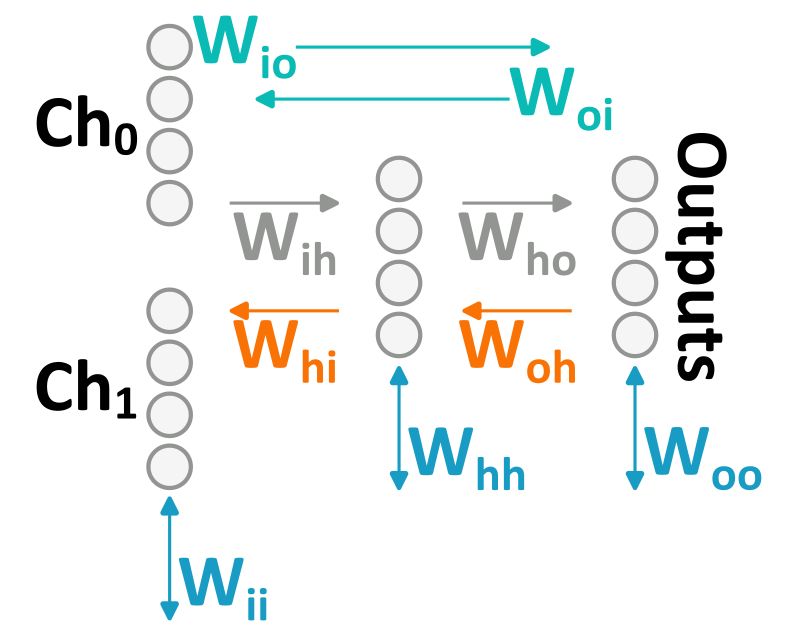
A neural network model with: input, hidden and output nodes, and 9 weight matrices.
We start from an artificial neural network with 3 sets of units and 9 possible weight matrices (or pathways).
By keeping the two feedforward pathways (W_ih, W_ho) and adding the other 7 in any combination,
we can generate 2^7 distinct architectures.
All 128 are shown in the post above.
🧵2/9
01.08.2025 08:26 — 👍 8 🔁 0 💬 1 📌 0
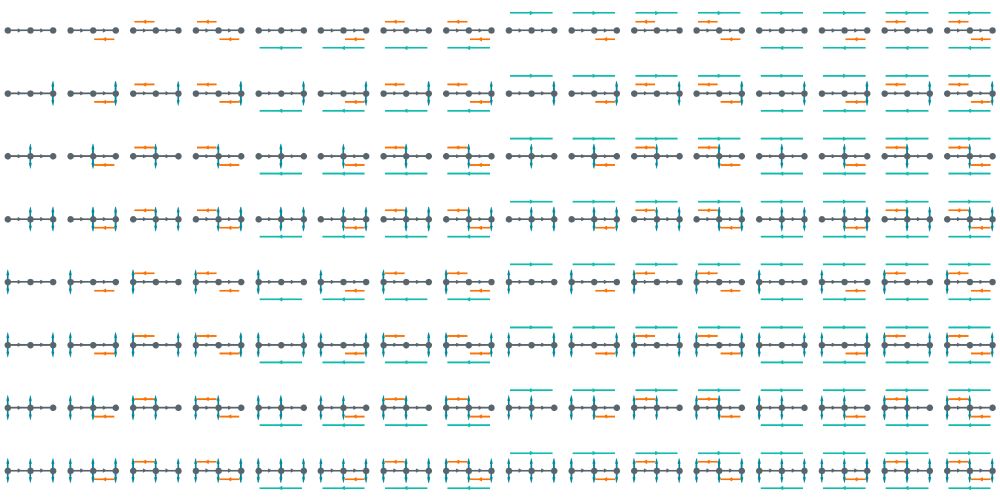
A diagram showing 128 neural network architectures.
How does the structure of a neural circuit shape its function?
@neuralreckoning.bsky.social & I explore this in our new preprint:
doi.org/10.1101/2025...
🤖🧠🧪
🧵1/9
01.08.2025 08:26 — 👍 63 🔁 24 💬 2 📌 3
Preprint update: The new version of #SPARKS🎇 is out!
Everything's in here: sparks.crick.ac.uk
A thread on what changed 🧵👇
@flor-iacaruso.bsky.social @sdrsd.bsky.social @alexegeaweiss.bsky.social
#neuroskyence #NeuroAI #ML #BioInspiredAI
31.07.2025 10:33 — 👍 8 🔁 4 💬 1 📌 1
Happy to discuss what you disagree with?
25.07.2025 16:15 — 👍 0 🔁 0 💬 0 📌 0

Description
Please note that job descriptions are not exhaustive, and you may be asked to take on additional duties that align with the key responsibilities ment...
Hiring a post-doc at Imperial in EEE. Broad in scope + flexible on topics: neural networks & new AI accelerators from a HW/SW co-design perspective!
w/ @neuralreckoning.bsky.social @achterbrain.bsky.social in Intelligent Systems and Networks group.
Plz share! 🚀: www.imperial.ac.uk/jobs/search-...
25.07.2025 13:27 — 👍 14 🔁 9 💬 2 📌 1
Aw thanks!
As I mentioned in the talk, this is my favourite figure!
Though, sadly, it has been confined to the supplement of the upcoming paper.
25.07.2025 12:39 — 👍 1 🔁 0 💬 0 📌 0
10. Keep your AIm in mind (🎯)
As a scientist your focus should be on generating insights and understanding, not models with an extra percentage or two in accuracy!
With that in mind, less performant, but more interpretable models may be preferable.
25.07.2025 10:58 — 👍 4 🔁 0 💬 0 📌 0
9. Aim for an interpretable, trustworthy model (🤖)
By using methods from explainable AI, we can try to understand why models may make specific predictions.
This can improve trust. Though, remains an open research problem!
25.07.2025 10:58 — 👍 4 🔁 0 💬 1 📌 0
8. Add what you know into your model (🦾)
While many AI methods learn from scratch, incorporating prior knowledge (such as physical laws or symmetries) can help and there are a range of techniques for doing this!
25.07.2025 10:58 — 👍 4 🔁 0 💬 1 📌 0
7. Start with synthetic data (🧮)
If your model is not working your problem could be:
* Your model (your code + hyperparameters)
* Your data
To resolve this, generate some simple data (e.g. Gaussian points), if your model can't handle data like these, it probably won't work on real data!
25.07.2025 10:58 — 👍 6 🔁 0 💬 1 📌 0
6. Start small and simple (🐣)
Many problems don't require a complex model.
Try:
* Establishing a baseline - e.g. guessing randomly or always guessing the mean
* Simple methods - e.g. linear regression
* Then, if necessary, increasingly complex models
25.07.2025 10:58 — 👍 8 🔁 0 💬 1 📌 1
3. Don't reinvent the wheel (🛞)
Most code you need already exists!
Use standard packages (e.g. @scikit-learn.org and @pytorch.org) as much as possible.
And if you are short on data or compute, consider building on existing (pre-trained) models (e.g. @hf.co).
25.07.2025 10:58 — 👍 5 🔁 0 💬 1 📌 0
2. Learn some terminology (🗣️)
At first many terms, in papers, talks etc, will seem opaque and confusing.
Getting familiar with these will help your understanding!
We provide a glossary of terms for reference, but really the best way is to read, listen and join seminars or reading groups.
25.07.2025 10:58 — 👍 4 🔁 0 💬 1 📌 0
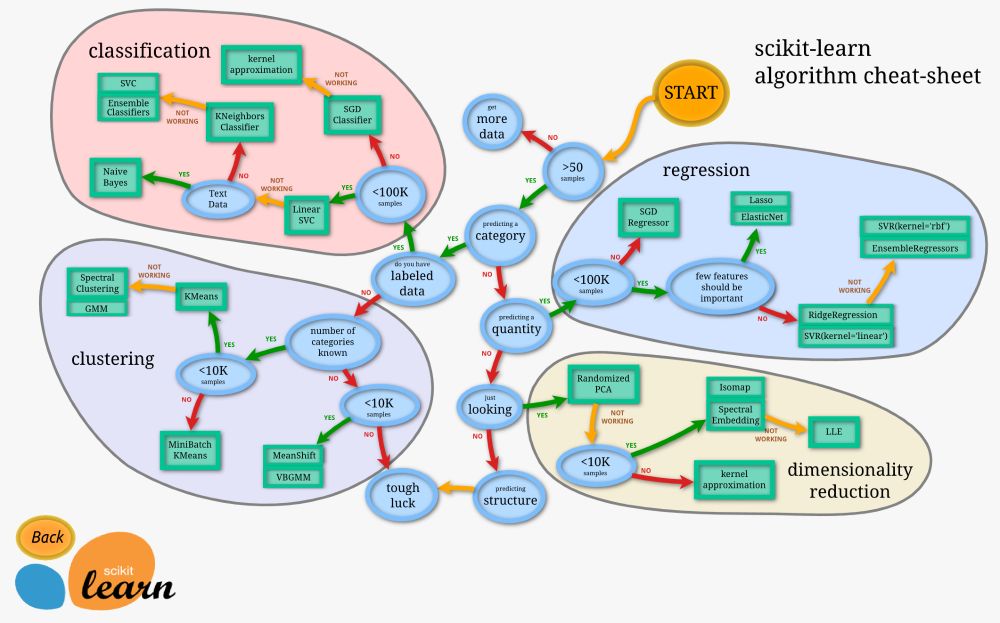
1. Frame your scientific question (🖼️)
Before diving into research, you need to consider your aim and any data you may have.
This will help you to focus on relevant methods and consider if AI methods will be helpful at all.
@scikit-learn.org provide a great map along these lines!
25.07.2025 10:58 — 👍 4 🔁 0 💬 1 📌 0
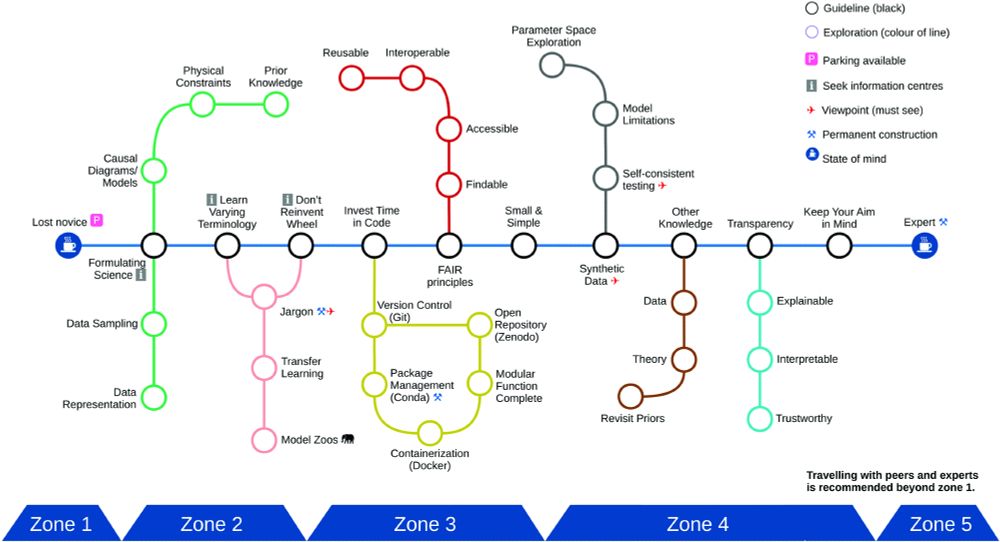
How can we best use AI in science?
Myself and 9 other research fellows from @imperial-ix.bsky.social use AI methods in domains from plant biology (🌱) to neuroscience (🧠) and particle physics (🎇).
Together we suggest 10 simple rules @plos.org 🧵
doi.org/10.1371/jour...
25.07.2025 10:58 — 👍 46 🔁 14 💬 2 📌 0
Had a great time discussing multisensory integration @imrf.bsky.social!
And really enjoyed sharing our new work too
21.07.2025 08:14 — 👍 20 🔁 1 💬 1 📌 0
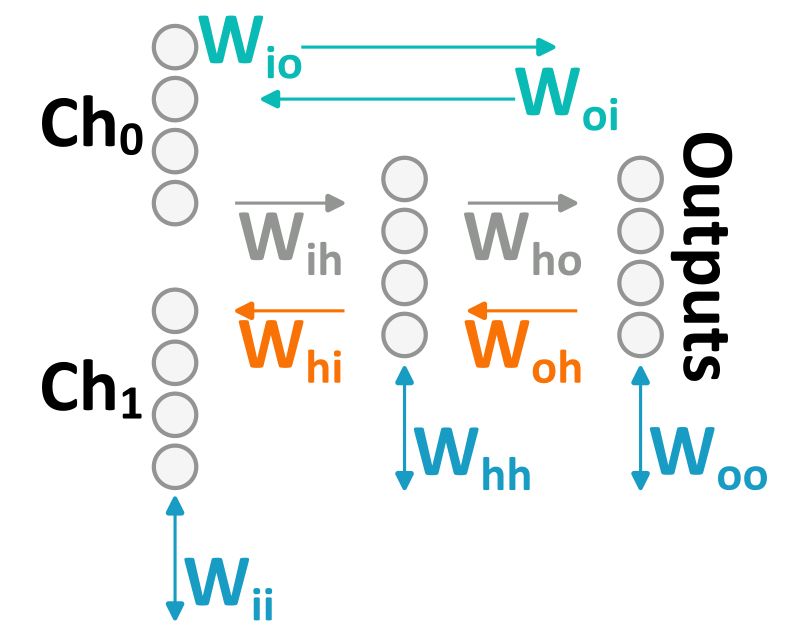
Off to my first @imrf.bsky.social conference!
I'll be giving a talk on Friday (talk session 9) on multisensory network architectures - new work from me & @neuralreckoning.bsky.social.
But say hello or DM me before then!
15.07.2025 09:22 — 👍 10 🔁 3 💬 0 📌 1
Mood & Memory researcher with a computational bent. https://www.nicolecrust.com/ Science advocate. Professor (UPenn Psychology). NEW BOOK: Elusive Cures. https://press.princeton.edu/books/hardcover/9780691243054/elusive-cures
Luiz Pessoa, University of Maryland, College Park
Neuroscientist interested in cognitive-emotional brain
Author of The Entangled Brain, MIT Press, 2022
Author of The Cogitive-Emotional Brain, MIT Press, 2013
Neuroscience & Philosophy Salon (YouTube)
Computational neuroscience PhD student at Boston University (advisors Cynthia Bradham & Gabe Ocker).
Mathematically modeling embryonic neurodevelopment
I write trippy scifi & mathfiction.
Ignyte Award Finalist 2025.
6 stories in Clarkesworld
26 yrs old
Computational neuroscientist interested in how we learn, and dad to twin boys
Asst prof at Baylor College of Medicine
https://www.henniglab.org/
Neuroscientist at the Crick studying cortical microcircuits and cell types.
www.znamlab.org
Asst. Prof. Of Neuroscience at Rutgers University- Newark.
Computational Cognitive Scientist 🧠🤖 • NeuroAI, Predictive Coding, RL & Deep Learning, Complex Systems • Postdoc at @siegellab.bsky.social, @unituebingen.bsky.social • Husband & Dad
🎓 https://scholar.google.com/citations?hl=en&user=k5eR8_oAAAAJ
Postdoctoral Researcher, working at the intersection of AI 💻 and neurosciences 🧠 @UKEHamburg
Previously @etislab and @cbcUPF
https://sites.google.com/view/raphael-bergoin/home
Computational neuroscientist studying learning and memory in health and disease. Dad, yogi, Assistant Professor at Rutgers University.
Neuroscience, engineering, AI, music. Asst. Professor / PI at University of Montréal and Mila.
Professor of Cognitive Neuroscience.
Co-director of York Neuroimaging Centre (YNiC).
Interested in memory, spatial navigation and brain imaging.
He/Him
http://www.aidanhorner.org/
Computational neuroscientist-in-exile; computational neuromorphic computing; putting neurons in HPC since 2011; dreaming of a day when AI will actually be brain-like.
Psychologist and neuroscientist at UCL https://metacoglab.org
Author, Know Thyself (2021) https://metacoglab.org/book
Dad and assistant to the Diplomat
Prof_Emeritus Zoology Cambridge. Circuits, synapses, coding, adaptation, benefits ,costs, constraints, efficiency, energy, noise, eye design, bassoon
Uses machine learning to study literary imagination, and vice-versa. Likely to share news about AI & computational social science / Sozialwissenschaft / 社会科学
Information Sciences and English, UIUC. Distant Horizons (Chicago, 2019). tedunderwood.com
How do we move? I study brains and machines at York University (Assistant Professor). Full-time human.
Neural Control & Computation Lab
www.ncclab.ca
Self cognition | computational modelling | meta-science, open science, diversity| amateur climber. @School of Psychology, Nanjing Normal University
Researcher at Imperial College London. Reduced-order models, machine learning and fluid dynamics. Views are my own.














